Nerve Regeneration After Surgery: Mechanisms and Strategies
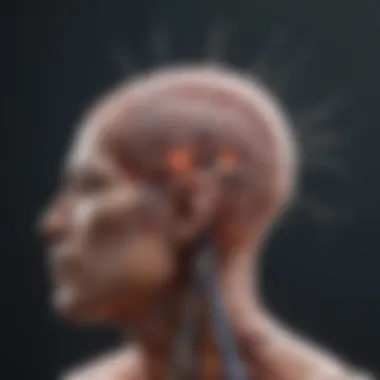
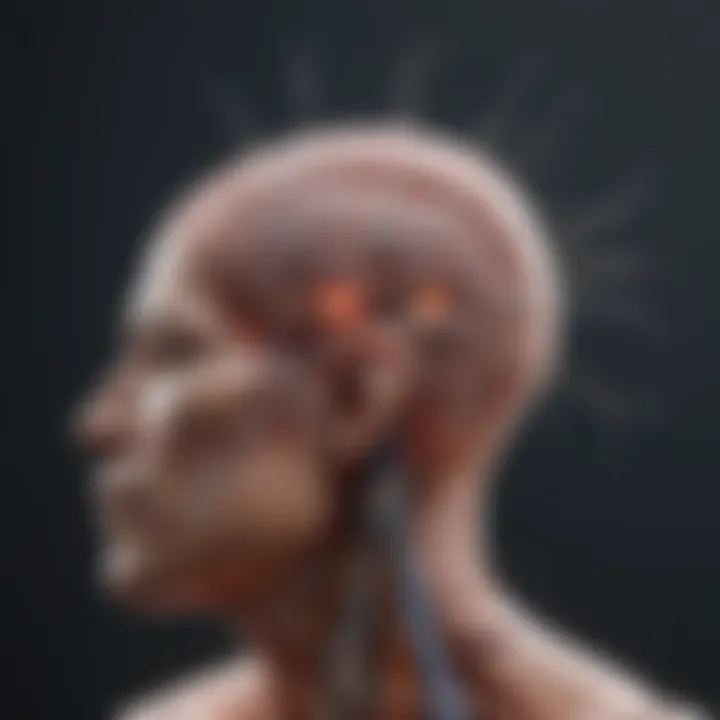
Intro
The journey toward nerve regeneration after surgery is a complex and multifaceted one. Understanding the biological and physiological processes that come into play when nerves are injured and subsequently healed is paramount. This article navigates through the developments in this field, shedding light on cellular interactions, healing mechanisms, and therapeutic approaches designed to enhance recovery.
Nerve injuries can arise from various circumstances, including surgical interventions. Regardless of the cause, the body's natural ability to repair is stimulated, though the efficiency of this repair can vary significantly. This variability can be influenced not only by the nature of the injury but also by surgical techniques used during the intervention.
In this context, we will delve into key findings regarding nerve regeneration, methodologies employed to study these processes, and a discussion that encompasses current therapeutic strategies. Let’s take a closer look at the insights gained from recent research efforts and how they influence both clinical practices and the future of neuroregenerative medicine.
Key Findings
Major Results
The exploration of nerve regeneration after surgical procedures has led to some intriguing findings:
- Cellular Communication: It's been shown that Schwann cells and macrophages play a vital role in facilitating nerve repair. Schwann cells, specifically, help in the remyelination of axons while macrophages manage inflammation and remove cellular debris.
- The Impact of Surgical Techniques: Research observations indicate that minimally invasive techniques tend to yield better nerve healing outcomes. The precision of these methods affects the microenvironment, making it more conducive to regeneration.
- Role of Growth Factors: There’s a growing body of evidence supporting the effectiveness of growth factors like Nerve Growth Factor (NGF) in enhancing the nerve regeneration process.
Discussion of Findings
The interplay of the biological mechanisms in nerve repair is intricate. For instance, signaling molecules released during inflammation not only orchestrate repair but may also inadvertently contribute to the scar formation that impedes nerve recovery. Thus, the delicate balance of promoting healing while preventing excessive scarring is essential in enhancing surgical outcomes.
Furthermore, the identification of various cell types’ roles in regeneration expands the possibilities for therapeutic development. For example, the application of cell-based therapies, which utilize these regenerative cells, is an area that holds promise.
Methodology
Research Design
Studies in this domain adopt a range of methodological approaches, often relying on both in vitro and in vivo models to simulate nerve injury and repair mechanisms. For instance, animal models provide insights into the efficacy of different surgical techniques on nerve recovery in real-life biological contexts.
Data Collection Methods
Data collection often includes histological analysis, which examines tissue samples post-surgery. Techniques like imaging and electrophysiological assessments are also critical in evaluating how well nerves regenerate. This comprehensive data enables researchers to draw informed conclusions about the effectiveness of various repair strategies.
In summary, the road to understanding nerve regeneration following surgical intervention is paved with ongoing research. Investigating these facets gives rise to new possibilities for improving patient care in neuroregenerative medicine.
Preamble to Nerve Regeneration
Nerve regeneration is a fascinating yet complex topic that resonates deeply within the scope of neurology and surgical procedures. As our understanding of the nervous system expands, so does our appreciation for the remarkable potential for recovery following nerve injuries. This section aims to delve into the importance of nerve regeneration, providing insights on its definition and underlying significance for maintaining nerve health.
Definition of Nerve Regeneration
To grasp the essence of nerve regeneration, it's essential to define what it actually entails. In simple terms, nerve regeneration refers to the processes by which nerve cells repair themselves after sustaining injury. This can involve various biological mechanisms—including the growth of axons, regrowth of connections, and changes in the cellular environment—to restore functionality. The complexity of this process mainly arises from the intricate structures involved and the different types of cells that play a role in restoration.
Overall, nerve regeneration consists of a series of cellular responses that aim to heal the lesion that has occurred. An important concept in this discussion is the distinction between the peripheral and central nervous systems. While peripheral nerves exhibit a remarkable ability to regenerate, central nervous system injuries often lead to more devastating consequences due to limited regenerative capabilities.
Importance of Nerve Health
Nerve health is not just a secondary consideration; it is paramount for a multitude of bodily functions. Good nerve health underpins everything from motor control to sensory perception. Injuries to nerves can lead to profound challenges, including loss of mobility, chronic pain, and impaired sensations. Therefore, maintaining healthy nerves is not just about avoiding injuries; it’s also about fostering an environment in which the body can effectively heal itself if such injuries do occur.
The implications of nerve regeneration extend beyond individual recovery; they span into the broader realms of healthcare and rehabilitation techniques. In populations with aging individuals or those facing chronic health conditions, understanding nerve regeneration could lead to advancements in treatments and improvements in quality of life.
"Regenerating nerves is not merely about healing; it’s about unlocking the body’s potential to restore its own functions and improving lives on a granular level."
Anatomy of Nerve Structures
Understanding the anatomy of nerve structures is crucial for comprehending the complexities of nerve regeneration post-surgery. The intricate makeup and architecture of nerves play a vital role in determining how effectively nerves can heal after injury. This section delves into the composition of nerve tissue and the distinct functions that different nerve types serve. By shedding light on these aspects, we can better appreciate the challenges faced during surgical interventions and the implications for recovery.
Composition of Nerve Tissue
Nerve tissue is made up of various components, each serving its purpose in the functioning of the overall nervous system. The main constituents include:
- Neurons: The primary cells responsible for transmitting signals. Each neuron has a cell body, dendrites that receive signals, and an axon that transmits impulses away from the cell body.
- Glial Cells: They are the support system for neurons. These cells outnumber neurons significantly and play roles in maintaining homeostasis, forming myelin, and providing support and protection for neurons. Specific types of glial cells important for nerve regeneration include Schwann cells and astrocytes.
- Extracellular Matrix (ECM): This is the network of proteins and carbohydrates surrounding cells, which provides structural support and facilitates communication. The ECM changes in response to injury, influencing regeneration outcomes.
Understanding how these components interact helps explain why some nerves can regenerate more effectively than others.
Function of Different Nerve Types
Nerves are categorized into different types, each with unique functions that are critical for bodily functions:
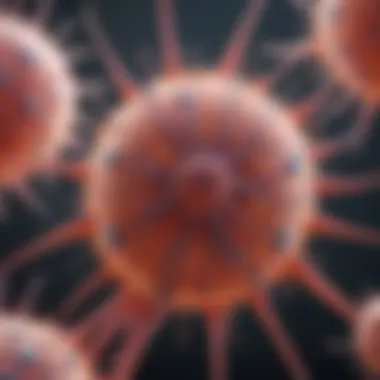
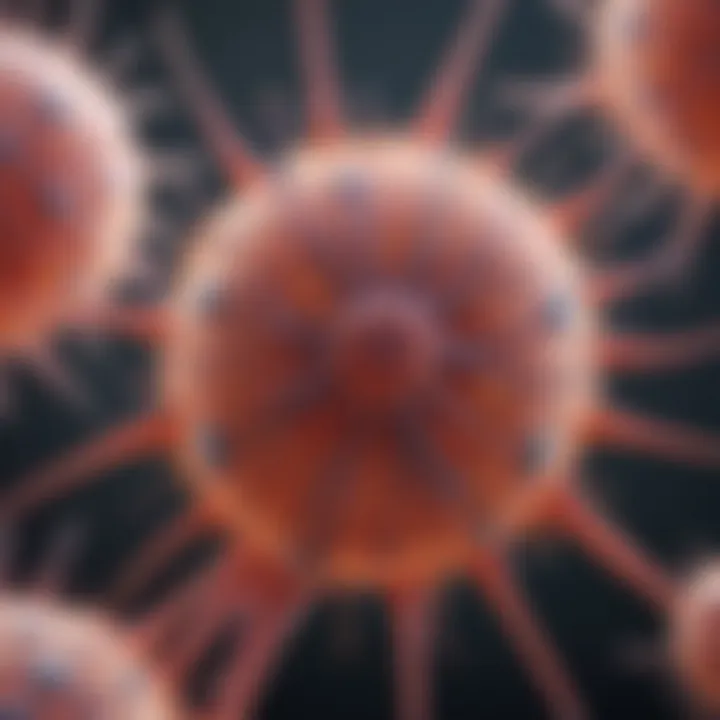
- Sensory Nerves: These nerves convey sensory information from the peripheral organs to the central nervous system, like touch or pain. They are responsible for how we engage with our environment.
- Motor Nerves: These nerves send signals from the central nervous system to muscles, allowing for voluntary movements. Damage to these nerves can severely affect mobility and muscle coordination.
- Autonomic Nerves: They regulate involuntary bodily functions, like heart rate and digestion. The autonomic nervous system is divided further into sympathetic and parasympathetic divisions, which are essential for homeostasis.
The ability of a nerve to regenerate is often proportional to its type and function, emphasizing the importance of detailed knowledge in surgical contexts.
"Anatomical understanding is the key to unlocking potential in nerve rehabilitation; injury specifics influence the choices made during and after surgical procedures."
Mechanisms of Nerve Regeneration
Understanding the mechanisms behind nerve regeneration is crucial for advancing medical practices related to surgical interventions. The human nervous system is a complex network, and its ability to recover from injury not only affects individual health but also impacts broader medical outcomes. Recognizing how nerves repair themselves can help develop better strategies to support patients, enhancing not just their physical recovery but also their quality of life.
Cellular Responses to Injury
When a nerve sustains an injury, a cascade of cellular responses is set in motion, marking the body's attempt to initiate healing. This response starts with the immediate reaction of the neuron. Neurons, upon injury, experience a process known as Wallerian degeneration, where the distal segment of the axon disintegrates. This form of degeneration, while seemingly negative, actually creates an environment conducive for regrowth.
- Inflammation: The first line of response involves inflammation, where immune cells such as macrophages migrate to the injury site. They clear away debris and release cytokines that set the stage for healing. This is like cleaning up a mess before moving on to fixing the underlying issue.
- Cell Proliferation: Following this clean-up, various supporting cells, including Schwann cells, proliferate. These supportive cells are significant players—they produce essential signaling molecules that help direct regenerating axons and create a favorable environment for recovery.
- Neuronal Regeneration: As Schwann cells assist, the proximal segment of the damaged neuron starts forming growth cones—specialized structures that guide the regrowing axon toward its target. This directionality is essential, and its success often dictates the overall outcome of recovery.
The coordination of these cellular responses ultimately influences the efficiency of nerve repair and informs strategies for rehabilitation.
Role of Schwann Cells
Schwann cells are the unsung heroes in the nerve regeneration saga. These cells line the axons in the peripheral nervous system, forming a protective layer known as the myelin sheath. When a nerve injury occurs, Schwann cells transition from a quiescent state to an active regenerative role. Their contributions can be summarized as follows:
- Myelination: This is fundamental for the conduction of nerve impulses. When Schwann cells remyelinate the regrowing axons, they restore the nerve's ability to transmit signals efficiently.
- Guiding Axon Regrowth: Schwann cells secrete growth factors essential for neuron survival and function. They provide a physical pathway that facilitates axon growth and align the regrowing axons with their targets, acting as signposts on a well-marked road.
- Clearing Debris: Along with their proliferative properties, they also help clear cellular debris post-injury, further optimizing the environment for successful regeneration.
The intricate dance of Schwann cells in the wake of an injury showcases how critical they are for effective nerve regeneration, making them a focal point in therapeutic strategies.
Neurotrophic Factors in Repair
Another key aspect of nerve regeneration is the role of neurotrophic factors—molecules that support neuron survival and differentiation. These factors are like nurturing parents for nerve cells, providing the right environment for recovery. Here are some significant neurotrophic factors involved in nerve repair:
- Nerve Growth Factor (NGF): Critical for the survival and maintenance of sympathetic and sensory neurons. This factor plays a direct role in promoting the growth of nerve fibers.
- Brain-Derived Neurotrophic Factor (BDNF): BDNF is instrumental in supporting the growth and proliferation of new neurons, particularly after nerve injury. It aids in the regrowth of axons and enhances synaptic plasticity, which is vital for learning and memory.
- Neurotrophin-3 (NT-3): This factor has a special affinity for sensory and motor neuron repair post-injury. NT-3 enhances axonal growth and is crucial during the early phase of nerve repair.
Through the interplay of these neurotrophic factors, nerves are not just mending from damage but are also adapting to better functionalities in the long run. Understanding their mechanisms offers a pathway for developing pharmacological interventions that enhance nerve repair significantly.
"The complexity of nerve regeneration underscores the need for comprehensive research that intertwines cellular biology with surgical practices. Studies that explore these mechanisms will pave the way for innovations in therapeutic strategies."
The mechanisms of nerve regeneration present a vast landscape of biological interactions that have profound implications on surgical repair techniques and recovery strategies.
Factors Influencing Nerve Regeneration
The process of nerve regeneration is anything but straightforward. It’s like a complex dance where various factors influence each step. Understanding these factors not only sheds light on how nerves heal after surgery but also helps medical professionals shape treatment strategies effectively. After all, nerve health is paramount, and even small improvements in healing can have profound impacts on a patient's quality of life.
Age and Nerve Repair
As people age, the body undergoes a plethora of changes that affect the healing process. Older individuals often experience slower regeneration rates compared to their younger counterparts. This slower recovery can be linked to diminished cellular functions, reduced neurotrophic factor availability, and a less effective immune response. This means that when an elderly person undergoes surgery for nerve repair, the surgeon often encounters hurdles that are seldom seen in younger patients.
Several studies suggest that the age-related decline in Schwann cell function hinders the axonal regeneration process. Schwann cells play a pivotal role in supporting and guiding the repair of damaged nerves. Moreover, with advancing age, complications such as vascular diseases or diabetes might crop up, further complicating nerve repair efforts.
“Age is a significant hurdle in nerve regeneration, affecting not just the pace but also the overall effectiveness of the healing process.”
Comorbid Conditions
It’s crucial to recognize that coexisting medical conditions can throw a wrench in the healing process of nerve injuries. Conditions like diabetes, hypertension, and autoimmune diseases can drastically affect the regenerative capabilities of nerves. For instance, diabetes can lead to peripheral neuropathy, complicating the surgical repair of nerves. The neuropathy alters nerve structure and impacts the healing mechanics, making recovery a tougher slog.
Similarly, vascular diseases often mean that the blood supply to the nerves is compromised, leaving the tissues starved of essential nutrients and oxygen. This lack of support can turn what should be a healing process into a prolonged recovery ordeal.
Surgical Techniques and Outcomes
Not all surgeries are created equal. The techniques employed during nerve repair can greatly influence how well nerves regenerate. Direct nerve repair techniques, for example, typically yield better outcomes when the cut edges can be approximated accurately. Conversely, if a nerve is significantly damaged or if there's a substantial gap, surgeons may need to resort to grafting techniques.
Surgical precision, the skills and experience of the surgeon, and the type of sutures used can either facilitate or hinder the nerve's healing journey. Recent advancements in bioengineering, such as nerve guidance conduits, offer new avenues to improve outcomes, especially in challenging cases where traditional methods fall short.
In summary, various factors, such as age, preexisting health conditions, and the surgical techniques employed, intertwine in significant ways to influence nerve regeneration after surgical interventions. By comprehensively understanding these elements, healthcare professionals can better navigate the complexities of nerve recovery, tailoring approaches to enhance healing and improve patient outcomes.
Surgical Approaches to Nerve Repair
Surgical strategies play a significant role in the recovery of nerve functions after injury. They are vital not only for restoring the continuity of nerve fibers but also for optimizing the surrounding environment that supports regeneration. Understanding various surgical techniques can help clinicians make informed decisions that cater to individual patient needs, ultimately influencing long-term recovery outcomes. These approaches are designed to enhance nerve repair efficiency, addressing factors such as alignment, conduit support, and biological milieu.


Direct Nerve Repair Techniques
Direct nerve repair is a commonly used technique that involves aligning and suturing the severed ends of the nerve back together. This method is generally applicable in cases where the distance between the two nerve segments is minimal, allowing for direct reconnection.
Key elements of direct repair include:
- Alignment: Accurate alignment of the epineurium (the outer layer of the nerve) is crucial since misalignment can lead to inadequate regeneration and dysfunction.
- Suture Selection: The type of sutures used must promote healing without causing excessive foreign body reaction.
- Minimally Invasive Techniques: Techniques that reduce tissue trauma are advantageous, as they can promote better recovery.
While this method offers the potential for optimal recovery, it is not suitable for all nerve injuries, particularly those involving significant gaps.
Nerve Grafting Procedures
In situations where direct suturing is not feasible, nerve grafting comes into play. This involves using a segment of a donor nerve, or an autologous graft, to bridge the gap between the damaged nerve ends. Grafts can be harvested from other places in the body, such as the sural nerve in the leg.
Some essential aspects of nerve grafting include:
- Types of Grafts: Autografts, which are taken from the patient's own body, are considered the gold standard due to lowered rejection rates.
- Conduits for Repair: In certain cases, acellular or bioengineered conduits may serve as alternatives when autografts aren't suitable.
- Healing Time: Recovery from grafting procedures can be prolonged due to the regeneration process, which may vary based on factors like the graft length and the age of the patient.
This approach can be complex but is often necessitated by the nature of the injury and can lead to restoration of functional nerve pathways.
Bioengineering Solutions
Emerging technologies in bioengineering are gradually transforming nerve repair paradigms. Innovations in tissue engineering and regenerative medicine have introduced new avenues designed to enhance nerve recovery. Bioengineering aims to provide scaffolds for nerve regeneration, potentially overcoming the limitations of traditional methods.
Aspects to consider in bioengineering solutions:
- Scaffold Development: Biocompatible materials that support cell attachment and growth help in bridging gaps and guiding regenerating nerves. These hybrids can deliver growth factors, enhancing repair.
- Smart Biomaterials: Novel materials that respond to biological signals can promote enhanced healing responses.
- Stem Cell Therapy: Incorporating stem cells into repair strategies holds promise as a method to rejuvenate the injured area with new neuronal cells.
Emerging research in this field suggests that bioengineering solutions might significantly improve surgical outcomes, making nerve injuries more manageable.
The integration of bioengineering in surgical approaches to nerve repair presents new hope for patients with severe injuries, illuminating paths of recovery previously deemed impossible.
Therapeutic Strategies for Enhanced Regeneration
In the realm of nerve recovery, post-surgical rehabilitation plays a pivotal role. It's not just about stitching the nerve back together; it's about ensuring that the recovery aligns with the body's natural healing processes. Therapeutic strategies tailored for enhanced regeneration focus on optimizing recovery through various means—each with specific benefits and considerations.
Physical Rehabilitation Techniques
Physical rehabilitation is often the backbone of nerve recovery strategies. The ultimate goal is to restore as much function as possible, but achieving this requires a thoughtful approach. Techniques can range from simple range-of-motion exercises to more complex functional training.
- Active movements help stimulate nerve function and blood flow, which can significantly aid in the recovery process.
- Therapeutic modalities, such as ultrasound or electrical stimulation, are often employed to reduce pain and promote healing in the affected area.
- Occupational therapy is critical for patients to regain skills needed for daily activities, ensuring they don't just heal, but also return to a semblance of normalcy in life.
"Recovery isn't just physical; it's finding ways to reclaim life beyond injury."
The emphasis must be placed on consistent and progressive training. Gradually increasing the complexity of exercises helps in building nerve pathways, which are essential for regaining motor function.
Pharmacological Interventions
Medications present another avenue for enhancing nerve regeneration. The right pharmacological approach can facilitate healing and alleviate discomfort, which can, in turn, promote active participation in rehabilitation.
Some potential interventions include:
- Analgesics for pain management—an essential component since pain can be a significant barrier to effective rehabilitation.
- Corticosteroids, which may reduce inflammation and expedite the healing process. However, these must be used judiciously as they can complicate other recovery aspects.
- Neuroprotective agents such as nerve growth factors help support survival and growth of neurons, significantly impacting the recovery trajectory.
While the pharmacological route can offer benefits, it's imperative to monitor for side effects. Each patient's situation differs, and the treatment plan must be personalized to maximize the potential for success without overwhelming the patient with unnecessary complications.
Innovative Approaches: Stem Cells and Beyond
Stem cell therapy is one of the most exciting and rapidly evolving areas in nerve regeneration research. These cells offer a remarkable capacity for differentiation and healing, making them a novel tool in the therapeutic toolbox.
Here are some aspects to consider:
- Regenerative potential: Stem cells can morph into various cell types and aid in the repair of damaged nerve tissue.
- Paracrine signaling: Stem cells release growth factors that may stimulate surrounding cells to regenerate, creating a supportive environment for nerve healing.
Yet, this approach does pose challenges, including concerns about ethics, the source of stem cells, and the need for more standardized treatment protocols to evaluate this method's long-term efficacy.
As research continues, the integration of stem cell therapies with other rehabilitation techniques holds the promise of significantly enhancing recovery outcomes, pushing the boundaries of what we understand about nerve regeneration.
The intersection of these therapeutic strategies creates a comprehensive roadmap to improve nerve regeneration after surgery. By understanding and implementing a mix of physical rehabilitation, pharmacological interventions, and cutting-edge technologies, the potentials for enhanced recovery are vast. As the field continues to evolve, close attention needs to be paid to emerging research and its practical implications for patient care.
Challenges in Nerve Regeneration
Nerve regeneration post-surgery is a complex process that poses numerous hurdles, making it a topic of significant importance within medical science. Nerve injuries, whether due to trauma, diseases, or surgical necessities, can lead to debilitating consequences. The intricate nature of nerve tissue requires careful consideration of various factors affecting regrowth and repair.
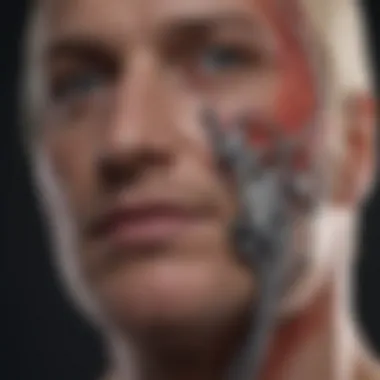

Understanding the challenges faced in nerve regeneration is vital for developing effective treatment strategies. The implications of these challenges not only affect surgical outcomes but also influence the quality of life for patients undergoing nerve repair procedures. Specific elements, such as the biological environment at the injury site, the raw materials available for repair, and the regenerative capacities of the nerve cells themselves, play an essential role in the healing process.
Scar Formation and Its Implications
Scar formation is one of the most significant barriers to successful nerve regeneration. When nerves are damaged, the body initiates a healing process that leads to scarring, but this scar tissue can impede the reconnection of nerve fibers. Scar tissue lacks the functional properties of normal nerve tissue, often resulting in permanent deficits in neural function.
- Types of Scar Formation:
- Primary scar: Forms immediately around the site of injury, sealing off the wound.
- Secondary scar: Develops in response to the healing process, often becoming more fibrotic.
The presence of scar tissue can also disrupt the signaling pathways necessary for neuronal regrowth, thus making it more difficult for nerves to regenerate effectively. Furthermore, this can lead to complications such as chronic pain or sensory deficits.
"Scar tissue may act like a wall, preventing the very fibers from reconnecting that need to in order to restore function."
Management of scar tissue formation is critical, requiring various approaches, including surgical techniques to remove excess scar, application of certain pharmacological agents to modulate the healing environment, or even techniques such as nerve grafting to bypass heavily scarred areas.
Challenges in Chronic Nerve Injuries
Chronic nerve injuries present a different realm of challenges compared to acute injuries. When nerve damage persists for an extended period, the chances of successful regeneration diminish significantly. The longer the nerve remains injured, the more severe the alterations in the microenvironment occur.
Factors influencing chronic nerve injuries include:
- Inflammation: Prolonged inflammation can damage adjacent healthy nerve tissue.
- Neuronal Loss: Sustained injury often leads to the loss of neurosupportive cells, such as Schwann cells, crucial for regeneration.
- Changes in the Neural Structure: Over time, the altered pathways and loss of synaptic connections further hinder regeneration.
- Comorbidity: Conditions such as diabetes can complicate the healing process, making it more challenging to restore nerve function.
For many patients with chronic nerve injuries, the implications extend beyond physical limitations. Psychological impacts, such as anxiety around potential loss of mobility or sensation, also weigh heavily on the patient's emotional well-being. Thus, addressing chronic injuries demands a comprehensive approach that considers not only the biological aspects but also the psychosocial factors at play.
In the end, while the promises of nerve regeneration hold significant hope, the journey is fraught with obstacles that demand ongoing research and innovative strategies to improve patient outcomes.
Research Frontiers in Neuroregeneration
The realm of neuroregeneration is evolving swiftly, akin to a river finding new paths through the landscape. Understanding how nerves heal after injury is not just a niche area of concern; it impacts numerous patients across various scenarios, especially in surgical contexts. Recent advancements in this field unveil a tapestry of intricate processes that promise to bolster our understanding and improve medical outcomes.
Highlighting research frontiers in neuroregeneration allows us to explore several pivotal components:
- Innovative therapies: New treatment modalities aim to enhance nerve recovery, translating laboratory findings into clinical practices.
- Understanding mechanisms: Studies focus not only on observable outcomes but also on the underlying biology that facilitates regeneration.
- Clinical implications: By connecting laboratory research to patient treatment, we can envisage a more robust framework for addressing nerve injuries globally.
Genetic and Molecular Studies
In the ever-expanding frontier of genetic and molecular studies, there exists the potential for groundbreaking revelations in the realm of nerve regeneration. Researchers delve into how gene expression influences the regenerative capacity of different neuron types. Specific genes, when activated post-injury, can either boost or hinder recovery. For instance, changes in neurotrophic factors can spur repair mechanisms, while certain inhibitors can block critical pathways.
Some notable aspects include:
- Gene therapy: This approach offers the chance to insert beneficial genes directly into nerve cells, fostering a better healing environment.
- Molecular signaling pathways: Understanding how these pathways operate can provide insights into possible targets for therapeutic intervention.
- Model organisms: Studies using models such as zebrafish and rodents contribute to our knowledge of nerve regeneration at the molecular level.
"The next decade will define the molecular landscape of neuroregeneration, shedding light on avenues previously obscured."
Clinical Trials and Future Directions
Clinical trials occupy a vital position in translating discoveries into practical applications. They pave the way for assessing the effectiveness of new treatments, ensuring safety for patients. Research has showcased various clinical approaches, some yielding promising results, while others highlight the unpredictability of nerve repair. The evaluations encompass diverse interventions: from pharmacological treatments to cell-based therapies.
Future directions in clinical trials can offer glimpses of transformative outcomes. Key trends include:
- Personalized medicine: Tailoring treatments based on a patient's genetic makeup could lead to more effective approaches.
- Combination therapies: Researchers are exploring the effects of administering multiple therapeutic avenues harmoniously.
- Regulatory pathways: With advancements come challenges in regulating these new therapies, emphasizing the need for clear frameworks that foster innovation while ensuring patient safety.
These research frontiers not only illuminate the path ahead but also emphasize the importance of integrating scientific inquiry with clinical practice. As methods evolve, the hope for regenerative medicine remains high, promising much for those grappling with nerve injuries.
End and Future Perspectives
The journey of nerve regeneration following surgery is loaded with both challenges and unprecedented possibilities. Understanding the mechanisms behind this complex process informs not only existing practices but also shapes future research directions and clinical implementations. As nerve repair technology matures, the opportunities for improving patient outcomes will expand, making this an invaluable area of study.
Summary of Key Findings
Through this exploration, certain key findings emerge as critical:
- Cellular Mechanisms: The role of Schwann cells and neurotrophic factors in nerve regeneration cannot be overstated. These components drive cellular growth, guide axonal regrowth, and significantly enhance healing.
- Impact of Surgical Techniques: The methods employed during surgical intervention play a massive role in the subsequent healing and recovery processes. Techniques such as direct nerve repair and grafting can significantly affect the odds of a successful recovery.
- Therapeutic Approaches: Current advancements in rehabilitation strategies, pharmacological interventions, and innovative biological solutions, such as stem cell therapy, indicate that a multidisciplinary approach can enhance regeneration.
"In hopes of maximizing nerve recovery, ongoing research must delve into genetic and molecular studies that might reveal new pathways for regeneration."
These points underline the intricacies involved in achieving effective nerve repair and the growing body of evidence that supports a multidisciplinary approach.
Implications for Medical Practice
The implications for medical practice are profound. As more knowledge is gathered on the mechanics of nerve regeneration, practices can be fine-tuned with precision-surgical techniques and rehabilitation protocols that tailor to individual patient needs. Future practitioners can benefit from:
- Enhanced Understanding: Knowledge of how various factors influence nerve repair will lead to improved preoperative assessments and surgical planning.
- Innovative Therapies: The exploration of neuromodulation techniques and regenerative medicine emphasizes patient-focused outcomes, catering treatments to specific conditions and individual variability.
- Holistic Management: Incorporating physical rehabilitation alongside surgical interventions supports overall nerve health and may reduce complications such as chronic pain and disability.
As we look to the horizon where elements of biotechnology and personalized medicine converge, the potential for revolutionary advancements in neuroregeneration becomes increasingly evident. Collaboration among researchers, clinicians, and policymakers is essential to translate discoveries into practice. This proactive stance not only assists in advancing research but ultimately elevates patient care.
Understanding these implications allows the field of neuroregeneration to move confidently into a future where better methods of analysis, surgical practice, and post-op care collectively contribute to the enhancement of the healing process.



